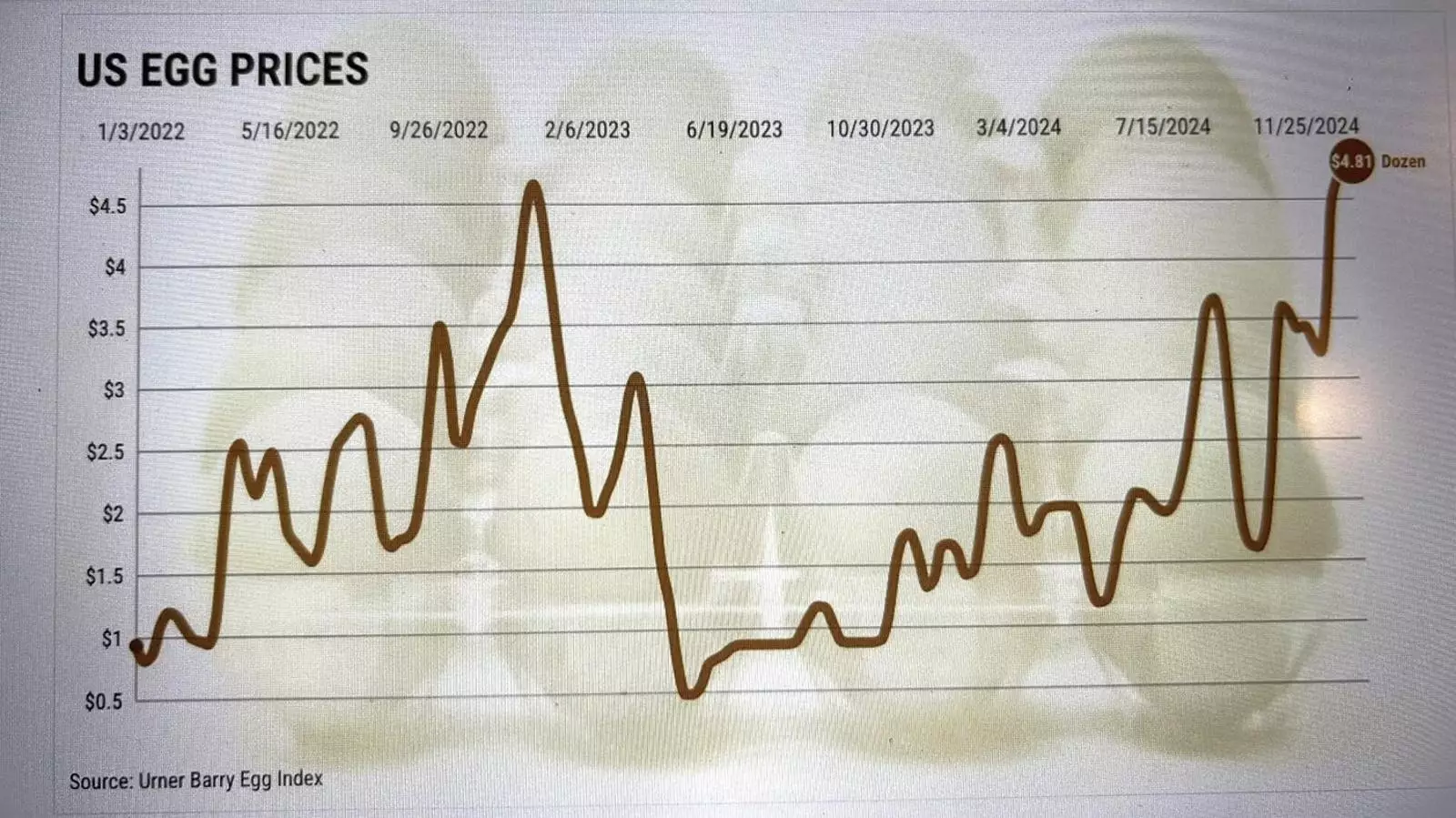In recent months, the surge in egg prices has evoked significant consumer concern, with the average price of Grade A large eggs soaring to approximately $4.15 per dozen—reflecting a 36.8% increase from the previous year’s average price of $2.52. This sharp escalation has not only captured headlines but has also become a focal point of discussions surrounding food inflation and agricultural economics. However, a comprehensive analysis necessitates delving deeper into the underlying factors that contribute to this alarming trend, moving beyond just the final price tag to explore the intricate interplay of supply, demand, and unforeseen challenges.
While consumers are understandably preoccupied with rising egg prices, it is crucial to recognize that chickens play a pivotal role in egg production, yet are often absent from public discourse on the matter. The proverbial dilemma of “which came first, the chicken or the egg” is not merely a philosophical musing; it underscores the essential relationship between egg-laying hens and the supply chain. Understanding that it requires approximately four and a half months for a healthy hen to begin laying eggs highlights the challenges faced by farmers, particularly when consumer demand surges unexpectedly.
Egg production is not a straightforward endeavor; it is deeply intertwined with the complexities of supply and demand dynamics. When the demand for eggs surpasses available supply—especially in the context of disruptions and delays in production—prices tend to skyrocket as producers scramble to balance the scales. Such imbalances necessitate regulating consumer demand, often by escalating prices to restore equilibrium. Moreover, any external variables, such as natural disasters or disease outbreaks, can exacerbate these fluctuations, creating a volatile market environment. In this case, one must take into account not only consumer habits but also broader agricultural concerns that impact the entire ecosystem of food production.
One of the most significant influences on the current egg pricing scenario can be traced back to the devastating outbreaks of avian flu identified in 2022. Since the arrival of H5N1, the United States has witnessed the loss of an unprecedented 147.25 million birds—representing nearly 39% of the national flock of egg-laying hens. With the remaining population only marginally recovering, the impact on egg production has been substantial. A hen typically produces about 300 eggs annually, and such a staggering reduction in the flock amplifies the challenges of meeting consumer demand.
Adding further strain to the agriculture sector is the increasing threat of climate change, which disrupts agricultural operations through severe weather events and resource scarcity. Between 2022 and 2024, there were numerous billion-dollar climate disasters that adversely affected the conditions necessary for healthy poultry farming. These occurrences not only reduce the ability to maintain a robust supply of chicken but also introduce additional costs that are ultimately passed on to the consumer.
As we examine the trajectory of egg prices, the outlook remains sobering. With the recent resurgence of avian flu and its accompanying spread across 29 states, confirmed reports indicate that millions of infected birds will need to be culled. The resulting effect of these health crises, alongside increased consumer demand ahead of seasonal events (such as Easter), suggests that egg prices could escalate by an additional 20% in the near future—far surpassing the anticipated overall food inflation rate.
In this landscape of uncertainty, where consumers are grappling with food prices that seem to rise seemingly without end, it is essential to stay informed and proactive. Taking advantage of sales and remaining vigilant about purchasing habits can provide some relief, but it’s evident that the complexities of food production will continue to exert pressure on prices. The interplay of economics, environmental factors, and consumer behavior will ensure that the conversation surrounding egg prices remains a relevant topic throughout the year and beyond.
As consumers face the stark realities of food inflation, understanding the multifaceted nature of agricultural economics is crucial. The relationship between supply and demand, along with external challenges, is set to keep egg prices in the spotlight for the foreseeable future.

